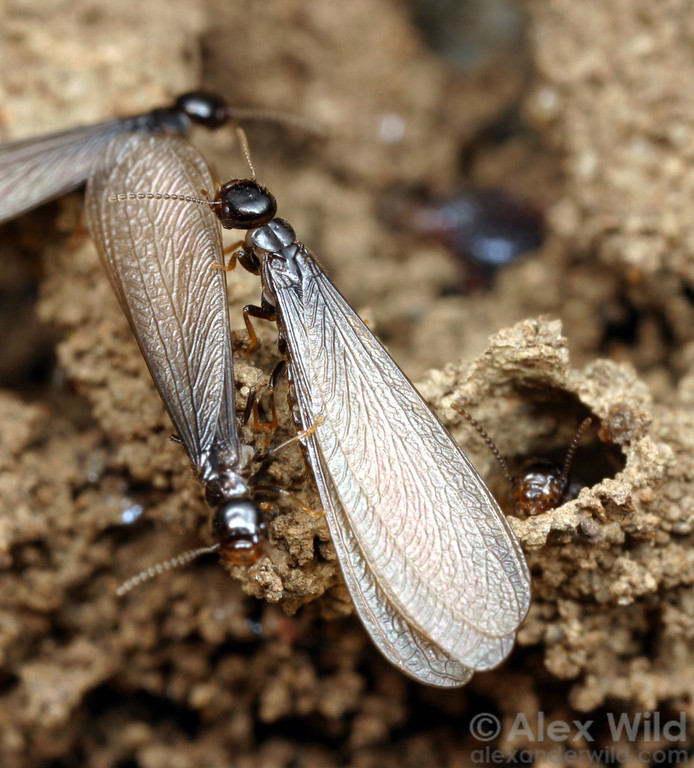
Reproduction
Cryptotermes cavifrons form into colonies and divide responsibilities amoung castes within these colonies. Those castes include workers, soldiers, and termites responsible for reproduction. To differentiate between these different groups, one could look at the internal structures. Reproductive members have larger brains that fill up nearly all the space within their heads. Workers and soldiers have very small brains relative to their head sizes. The sex organs and frontal glands are both smaller with in the soldier/worker type termites than in the reproductive termites. Also lacking in relative size is the compound eyes of the solider/worker termites. Once classified as a reproductive C. cavifrons, these termites are then divided into three further groups. The first of these three groups are classified by their long wings. The second group of termites are distinguished by shorter wing pads. The last of these three groups lack both wings and wing pads. These three types combined with the worker and soldier type make up the five classifications of C. cavifrons (King 1922).
These termites are eusocial which the majority of individual termites cooperate to support the reproductive termites. This cooperation is evident in that they collectively care for their young, rather than parents only watching over their offspring. The first step in producing offspring is the laying of eggs. This is followed by hatching and the appearance of larvae. These larvae go through a series of three molts. Some will molt into what is called a “presoldier” (Brammer and Scheffrahn 2002). These termites will resemble the features of a soldier termite but will lack color and therefore be white. Another group will molt into termites capable of reproduction. The last portion of larvae will develop into worker termites. These termites are responsible for the orientation of the nest along with the task of feeding the soldier termites. All three of the reproductive termites mentioned above are referred to as “nymphs” (Brammer and Scheffrahn 2002). The nymphs will eventually form into the long winged type of termite previously mentioned. “Alate” is the technical term for these long winged termites (Brammer and Scheffrahn 2002).
 The process of a nymph molting into an alate
happens at different times for C. cavifrons. Because
of this, alates may be found within colonies all year round.
This is far from normal compared to the other species of dry
wood termites. Alates can be seen in swarms once they fully
mature. Swarms are their method of dispersal. Swarms mostly
occur in the latter part of the day between the months of March
and May. These reproductive C. cavifrons compensate
for their weak wings by using the wind to aid in flight. Even
with this added assistance, alates manage to stay close to their
original colony. Shortly after landing, alates will tear off
their wings and find an appropriate place to mate. Such a place
would include cracks in dry wood and knotholes. Females then
proceed to lay eggs which will hatch in the following months.
This starts the five year process of colony formation as
discussed in the Habitat and Geography section (Brammer and
Scheffrahn 2002).
The process of a nymph molting into an alate
happens at different times for C. cavifrons. Because
of this, alates may be found within colonies all year round.
This is far from normal compared to the other species of dry
wood termites. Alates can be seen in swarms once they fully
mature. Swarms are their method of dispersal. Swarms mostly
occur in the latter part of the day between the months of March
and May. These reproductive C. cavifrons compensate
for their weak wings by using the wind to aid in flight. Even
with this added assistance, alates manage to stay close to their
original colony. Shortly after landing, alates will tear off
their wings and find an appropriate place to mate. Such a place
would include cracks in dry wood and knotholes. Females then
proceed to lay eggs which will hatch in the following months.
This starts the five year process of colony formation as
discussed in the Habitat and Geography section (Brammer and
Scheffrahn 2002).
Photo courtesy of Alex Wild